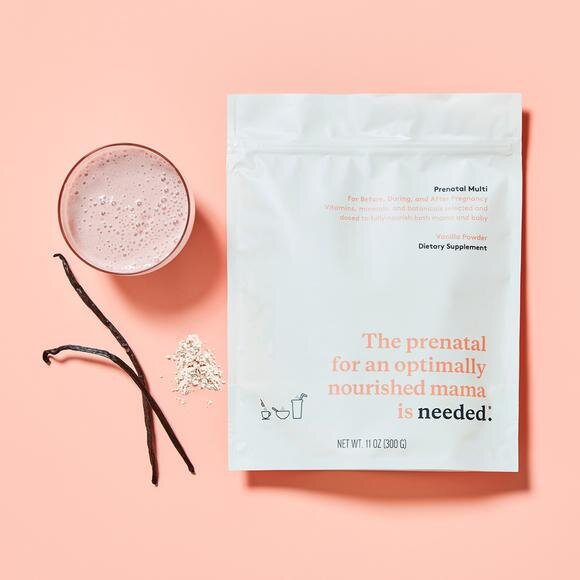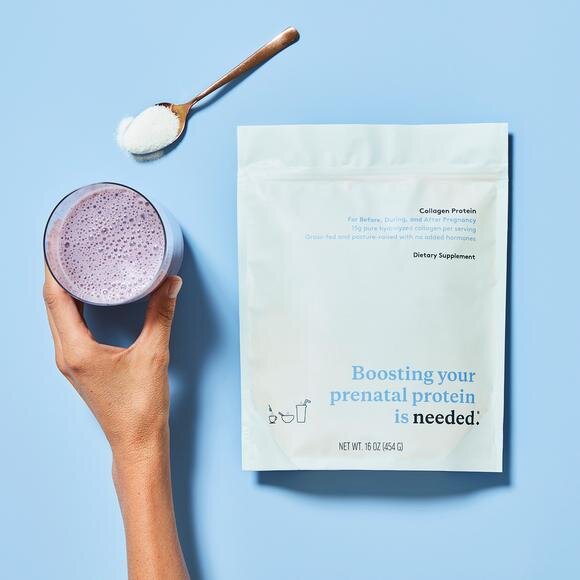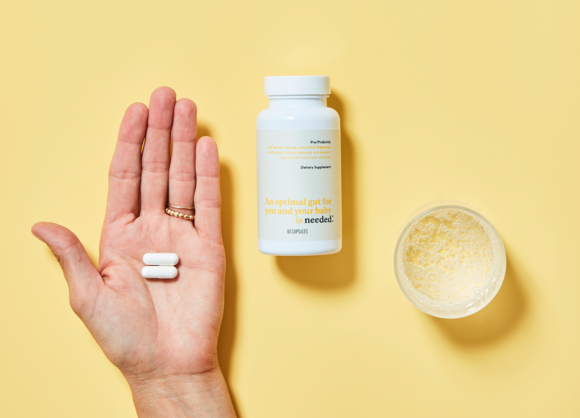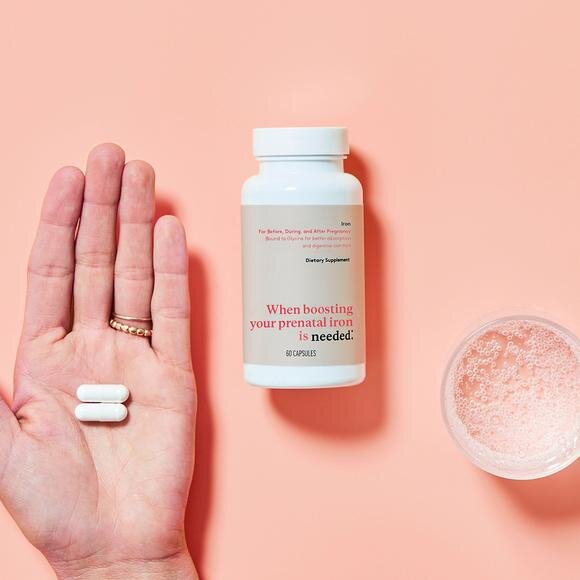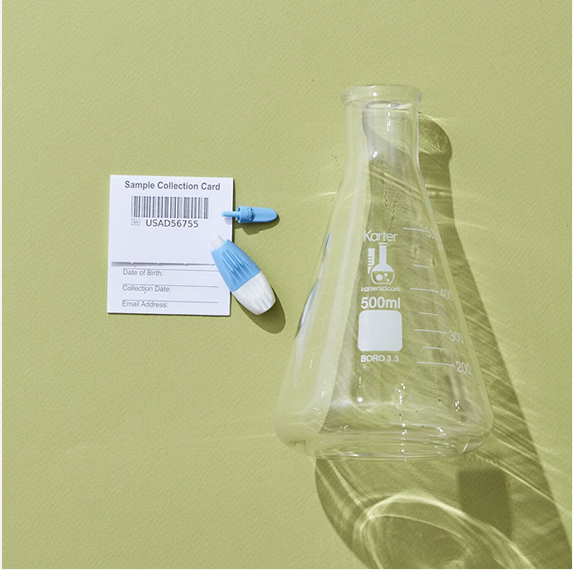In this episode, Dr. Mark and Anisa dive deep with Lily Nichols, RDN into the true concerns for mamas and babies when a woman chooses to follow a vegetarian (or even limited animal protein) diet. Though there is so much to be discussed on this topic, we covered the key concerns of what true protein needs are in pregnancy, essential pregnancy micronutrients often deficient on a vegetarian diet, the differences between animal and plant forms of nutrients, and the challenge of balancing blood sugar on a limited protein diet.
Lily Nichols is a Registered Dietitian/Nutritionist, Certified Diabetes Educator, researcher, and author with a passion for evidence-based prenatal nutrition. Her work is known for being research-focused, thorough, and unapologetically critical of outdated dietary guidelines. She is the author of two bestselling books, Real Food for Pregnancy and Real Food for Gestational Diabetes. You can find her work at LilyNicholsRDN.com and follow her on Instagram: @lilynicholsrdn
We fully understand that this is a controversial topic and ask that each person listening does so with an open mind and accepting the information we discuss from a place of curiosity and in the best interest of mama and babe.
Show notes
2:45: Anisa’s personal challenges following a vegetarian diet
3:20: How protein needs vary for women in pregnancy and other common concerns with protein in pregnancy
RDA is arguably too low even outside of pregnancy
Current RDA: 0.8 g/kg (about 10% of caloric intake). After `13 weeks goes up to 1.1 g/kg
Other recommendations: 70g in last 2 trimesters
9:30: 2015 first study on estimating protein needs in pregnancy for Estimated Average Requirements (EARs: meets 50% of group’s needs)
Estimated that protein needs in early pregnancy are 39% higher than conventionally recommended and 73% higher than current recommendations for late pregnancy.
Downside of not getting enough protein: elevated blood sugar (Gestational Diabetes)
Study showed that recommendations should be at least 1.22 g/kg for early pregnancy and 1.52 g/kg in late pregnancy. Study referenced: Stephens TV, Payne M, Ball RO, Pencharz PB, Elango R. Protein requirements of healthy pregnant women during early and late gestation are higher than current recommendations. J Nutr. 2015;145(1):73-78.
“There’s a lot of evidence that suggests the RDA is way underestimated when it comes to protein…Based on what we know about nutrient needs in these stages of pregnancy, the goal may even be 1.5 g/kg protein in early or 1.8-2 g/kg in late pregnancy.”
For a 134 lb woman (61 kg) current recommendations would suggest 48g of protein needed but if we were to use this study’s recommendation 92g would be needed (almost double!)
12:30: Micronutrients found in protein-rich foods and common protein-rich pregnancy “superfoods”
“If you reverse engineer a pregnancy diet based on the best evidence for micronutrient needs, you end up with enough protein, above 100g a day.”
14:00: Choline: similar functions as folate, reduce risk of NTD, supports general brain development, placental health and liver health, found primarily in protein rich animal foods like egg yolks and liver (also found in smaller amounts in vegetarian sources of protein such as nuts, seeds and legumes)
15:00: Vitamin B12: exclusively in animal foods, essential for proper organ formation, prevention of anemia, optimal gene expression (supporting optimal epigenetics), brain development.
On average 62% of vegetarian women are deficient in vitamin B12. Study referenced: Smulders YM, Smith DEC, Kok RM, et al. Cellular folate vitamer distribution during and after correction of vitamin B12 deficiency: a case for the methylfolate trap. Br J Haematol. 2006;132(5):623-629.
What sufficient levels for infant brain development and for health of mom and baby- issues with reference ranges.
RDA is under-estimated by approximately 3-fold (read: RDA should be 3x higher than current recommendation for pregnancy and lactation.) Study referenced: Bae S, West AA, Yan J, et al. Vitamin b-12 status differs among pregnant, lactating, and control women with equivalent nutrient intakes. The Journal of Nutrition. 2015;145(7):1507-1514.
Low serum B12 in mom resulting in low B12 in infant and breastmilk. Study referenced: Black MM. Effects of vitamin B12 and folate deficiency on brain development in children. Food Nutr Bull. 2008;29(2 Suppl):S126-131.
Aim toward the middle of the range instead of low end of the range
Those who are deficient in vitamin B12 also end up with B12 deficient breastmilk and a B12 deficient baby. This is a serious concern for early infancy. The mother’s body will do everything it possibly can to shunt nturients to baby but baby may exhaust these stores by 4-6 months after birth and this is when you start to see deficiency symptoms in an infant. Study referenced: Torsvik IK, Ueland PM, Markestad T, Midttun Ø, Monsen A-LB. Motor development related to duration of exclusive breastfeeding, B vitamin status and B12 supplementation in infants with a birth weight between 2000-3000 g, results from a randomized intervention trial. BMC Pediatr. 2015;15(1):218.
Symptoms of B12 deficiency in mother and infants: Differences in motor abilities (loss of ability to roll over, turn head, control movements smoothly- may appear like tremors), develop seizures, discontinue eye contact, irreversible brain shrinkage even after supplementation is given in attempts to repair, unusual sleepiness.
Gray area with the saying “It doesn’t matter what you eat, your breastmilk is always the best food for your baby’s needs”: “The first 1000 days of life are so important for a child’s lifelong health. There are specific processes happening with physical development especially with brain and organ development that are happening in these windows of time and if there are deficiencies in this period of time, you can’t make up for it later. That is the case with vitamin B12.”
“Of course there are so many important benefits from breastfeeding and breastmilk, but micronutrient levels in breastmilk do vary and B12 is very clearly affected by maternal status.”
Iron, Zinc, DHA, etc.
27:45: Differences between forms of nutrients of animal-based vs plant-based foods
29:00:Omega 3 fats
Needed for optimal brain and vision development - another example of a nutrient that when deficient can have irreversible effects. When a mother is not consuming adequate amounts in pregnancy, there are irreversible vision deficits in childhood
Forms of omega-3s: DHA + EPA are found together in food sources and they work synergistically together and with choline. DHA is not found in plants (ALA is plant sourced). Some plant sources of ALA: flax, chia, walnuts
Our bodies have the capability of converting some ALA to DHA but this is very inefficient. At best the conversion rate is 3.8%. Plus, if your diet is high in omega-6 (concentrated in seeds, nuts and vegetable oils and other plant based omega 3 sources) then this conversion rate drops to 1.9%.
When you supplement breastfeeding women with flaxseed oil and measure DHA levels in breastmilk, the levels are no different.
The only plant-based source that is significant enough is an algae-based DHA supplement. Like this one.
You can get plenty of DHA if you eat 12-16 oz/week of high omega 3 seafood sources (like salmon and sardines)
Concerns about heavy metal (like mercury) toxicity: Do benefits outweigh the risks? Avoid larger fish that bioaccumulate mercury like swordfish, mackerel, tuna, shark.
Safecatch Tuna: low mercury tuna
Most fish are high in selenium that can help bind mercury, preventing from absorbing much of whats in the fish
Studies assessing fish consumption and neurodevelopment in babies show it’s worth it: study out of UK 12,000 mother infant pairs, consumption of more than 12 oz fish/week was strongly linked fish consumption to higher IQ and communication skills as worst cognitive outcomes among children whose mothers consumed no seafood in pregnancy, resulting in issues with fine motor skills, social development and communication skills. Neurodevelopmental outcomes were better despite consuming some seafood containing mercury. Seafood is micronutrient rich (B12, DHA, B6 Choline, Selenium, Iodine)
Cochrane: >5% RBC DHA reduces risk of preterm birth, study referenced: Middleton P, Gomersall JC, Gould JF, Shepherd E, Olsen SF, Makrides M. Omega‐3 fatty acid addition during pregnancy. Cochrane Database Syst Rev. 2018;2018(11).
39:30: Vitamin A
Gene expression, fetal growth of heart, eyes, ears, limbs, immunity. Deficiency can lead to serious malformations (missing limbs, heart/kidney defects, etc.)
Pre-vitamin A in carotenoid rich plant foods, requires conversion to be utilized. Rate of conversion is similiarly inefficient as conversion of ALA to DHA. A significant percentage of the population has a genetic variation in BCMO (Beta Carotene Mono- oxygenase) enzyme which does this conversion
Pre-formed vitamin A in animal foods: Liver
Fear of toxicity of vitamin A in pregnancy. Many prenatal vitamins only have beta-carotene, some research 30-80% of women have insufficient vitamin A stores.
Synthetic supplemental retinol is much more associated with risks of toxicity
Study in Netherlands over 1700 women. Women who ate liver almost always consumed sufficient vitamin A, and in those who avoided liver: 70% failed to meet RDA (and the RDA level is even set too low!). Study referenced: van den Berg H, Hulshof KFAM, Deslypere JP. Evaluation of the effect of the use of vitamin supplements on vitamin A intake among (Potentially) pregnant women in relation to the consumption of liver and liver products. European Journal of Obstetrics & Gynecology and Reproductive Biology. 1996;66(1):17-21.
Recipes in Real Food for Pregnancy (Shepherd’s Pie, Beanless Beef Chili, Meatloaf)
47:00 Why is it harder to manage blood glucose when following a vegetarian diet in pregnancy and why is blood sugar regulation so important?
Risks of elevated blood sugar in pregnancy: changes in rate of fetal growth, larger than average size, increased insulin resistance,
“As a result of [consistently elevated maternal blood sugar] their pancreas is larger than normal, pumps out more insulin than normal, they’re more insulin resistant than normal, and they also can face a higher risk of Type 2 Diabetes and Obesity by the time they’re 13- upwards of 6-19-fold higher risk.”
Almost all whole-food vegetarian protein sources are packaged with carbohydrates. Many vegetarian meals are also low fat which further increases glycemic load of meals.
54:00 Rapid Fire Questions
What are you excited about or what are you researching currently that keep you interested in your current profession?
Just how little we know about nutrition. Current research is extremely lacking - especially when it comes to Recommended Dietary Allowances (RDAs)
Interesting study on how non-essential amino acids (like glycine and taurine- both primarily found in animal foods) is a misnomer- “animals and humans cannot adequately synthesize nonessential amino acids to meet optimal metabolic and functional needs ‘under either normal or stressed conditions’ pregnancy would definitely be a stressed condition in my opinion.” Study referenced: Hou Y, Wu G. Nutritionally nonessential amino acids: a misnomer in nutritional sciences. Adv Nutr. 2017;8(1):137-139.
Repeated theme: Regardless of if you’re following the “guidelines”, if you still have symptoms or don’t feel optimal, keep digging.
58:30: Common piece of advice that’s incomplete or misinformed
Concept of eating for 2: You need to eat more of certain micronutrients for sure. However, the way people interpret “eating for two” is to eat double or increase the quantity of their food without regard to the quality. But it’s nowhere near double, you add maybe an additional 300-500 kcal depending on activity and body size.
Books: Real Food for Pregnancy and Real Food for Gestational Diabetes
As a thank you for supporting Lily’s small business, those who purchase a paperback copy of Real Food for Pregnancy **directly from her site** will get a 30-recipe e-cookbook as a FREE gift.
This e-Cookbook is available for purchase separately -OR- you can get it for FREE when you order a paperback copy (details below).
For Lily’s U.S. readers, there are a few reasons you may want to buy paperback copies direct from her shop:
FREE goods! All paperback purchases will come with a FREE copy of the new e-Cookbook! That’s a $19.99 value. Simply add BOTH items to your cart (paperback + e-Cookbook) and use code GIFT at checkout. The cost of the e-Cookbook will be deducted from your order.
Discounts on 5+ copies. A lot of people like to gift Real Food for Pregnancy to their friends or clients, but don’t meet the 15 minimum copy threshold for wholesale orders. Solution: Lily’s BUY4GET5 offer. Add 5 copies of Real Food for Pregnancy to your cart. Use code BUY4GET5 and the cost of one book will be deducted from your order.
FREE shipping on all orders in the continental U.S. Although she can’t beat the expediency of 2-day prime shipping (not quite ready for a personal fleet of delivery vehicles and autonomous warehouse robots, haha), Lily can offer standard shipping for free.
Support Lily’s work more. Direct book sales from the author mean a larger percentage of your purchase goes to support her. More support for her work means she can spend more of her time on freely-available content, like her in-depth blog posts and interviews.




